For a girl who couldn’t get an eryngium to bloom before, this is shaping up to be an exciting summer.
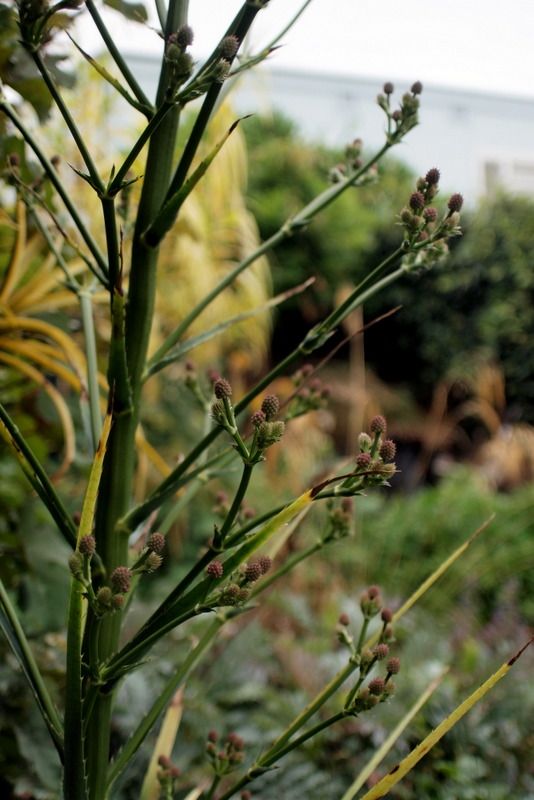

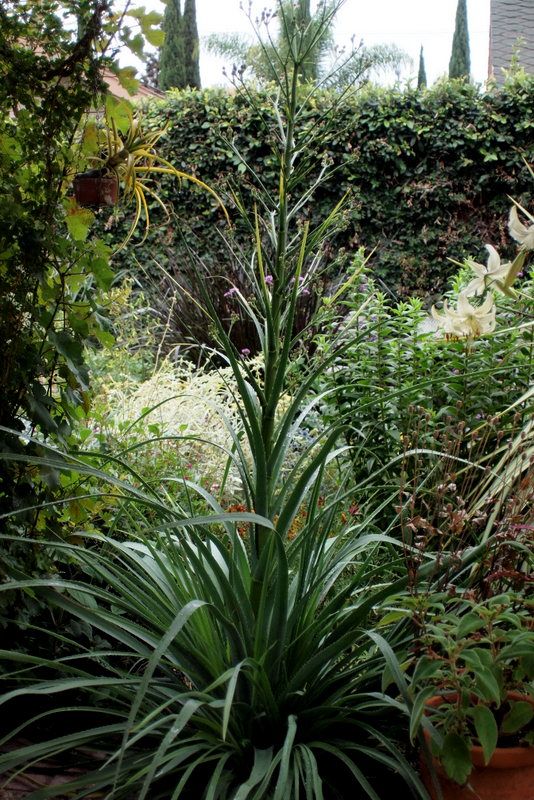
Eryngium pandanifolium is supposedly the biggest eryngo of them all. I’ve been intently watching it develop this wicked candelabra of a bloom truss. Each morning the bloom stalk twisted in a different direction, as though it had been thrashing about during the night in the throes of birth, like H.R. Giger’s Alien. Today it was fully upright and looks like it means to stay that way. 5 feet tall and still growing. I planted it at the patio’s edge and have basically relinquished use of this little patio off the back door, removing chairs and most containers, so the eryngo gets lots of light and air at its base. Its barbed leaves sprawl onto the bricks, covering most of the patio, but what price love?
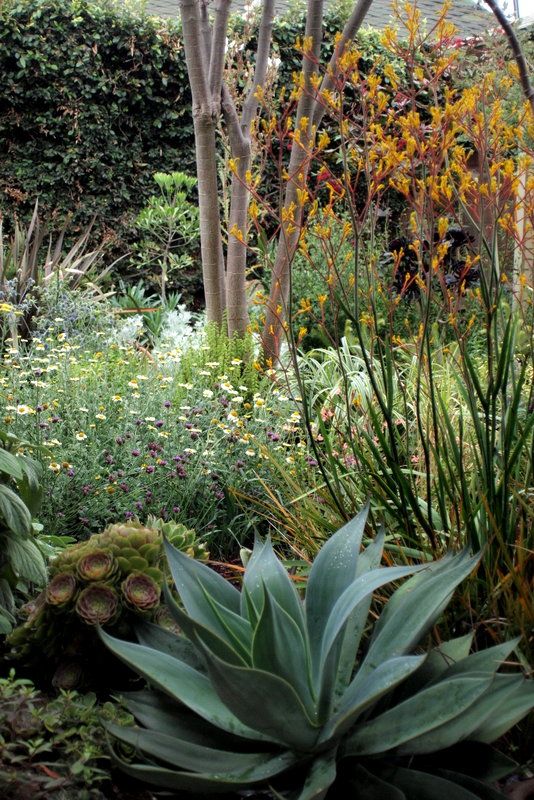
But there is such a thing, believe it or not, as too much excitement
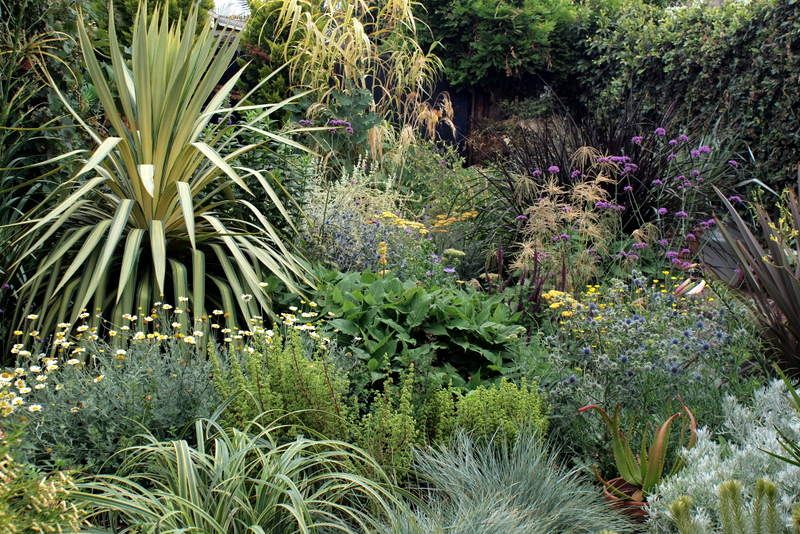
Hmmm, something’s missing…

Now you see it, now you don’t. Another day, another collapse of a Euphorbia cotinifolia in my garden. I think this is the third, maybe fourth time. The rope on its trunk was tied to a nearby Argemone munita to keep the argemone from falling. There’s irony there somewhere.
Last Friday, June 14, at 2:10 p.m., I heard a whoosh, peeked out the office door, and beheld the awful horizontality. But the smash wasn’t entirely unexpected. I left this comment on Hoov’s blog Piece of Eden June 11: “I was watching my Euphorbia cotinifolia sway in the breeze yesterday, swaying from the base of the trunk, as in rocking in the breeze. And it’s listing too, so I think it’s going over soon, right on top of the anigozanthos no doubt. Control is illusion. Loved Ed Norton in khaki in that movie — loved the whole movie. (P.S. I think your pups want to go camping.)” We were discussing her pups’ love of the movie Moonrise Kingdom.
Euphorbia cotinifolia, the Caribbean Copper Tree, is widely used as a summer annual for containers, but in regions without frost it reaches tree size. This tree was a seedling, meaning it was sown in situ from a previous Caribbean Copper Tree, something I thought would give this brittle tree all the advantages it would need for stability. And it had multiple trunks, another plus. A single-trunked copper tree snapped in two during high winds. This is the third time, and I am so not charmed anymore. Marty washed the saw off with soapy water this morning. He was driving tourists on a boat through Long Beach harbor when the smash came. Sunny day, 70-ish degrees, no wind, 2:10 p.m. I worked like a madwoman to remove the tree and assess damages, and the whole mess was cleaned up by 4 p.m. Amazingly little damage was done. That Argemone munita was uprooted, of course. Some broken kangaroo paws were brought in for vases. One of the two stalks of Aeonium ‘Cyclops’ was broken at the base, which I’m trying to root again. A spiral aloe was flung out of the ground. It’s an awful thing to admit, but I was at a local nursery at 4:15 to check out replacements.
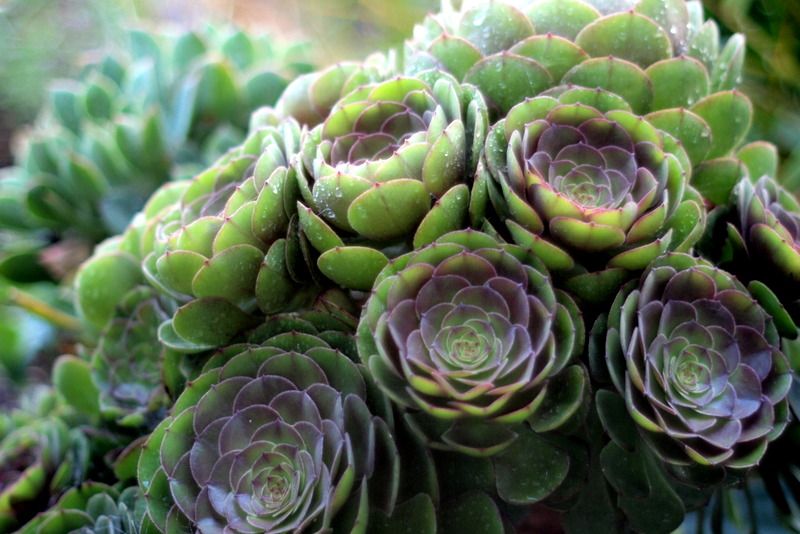
Succulents like these aeoniums were still intact after I pried the tree off of them. Onward with Bloom Day.
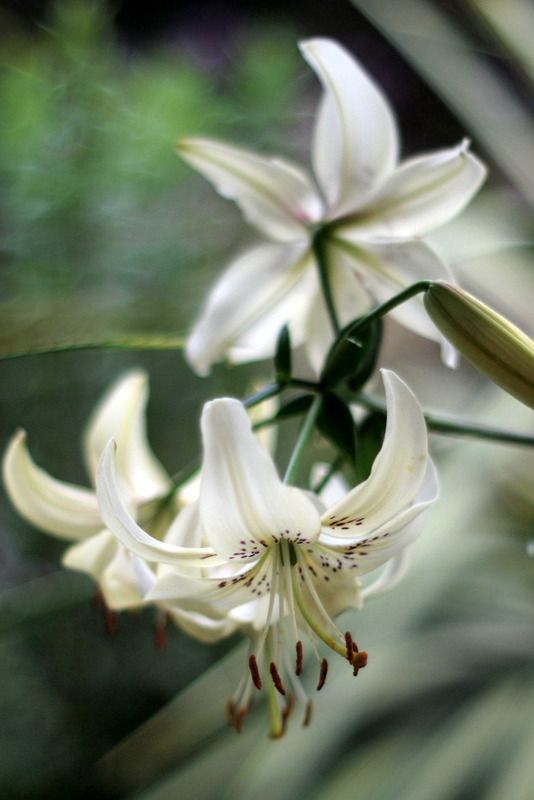
I thought there’d be just two lilies in bloom this summer, this unknown white and the copper ‘African Queen,’ both growing in pots.
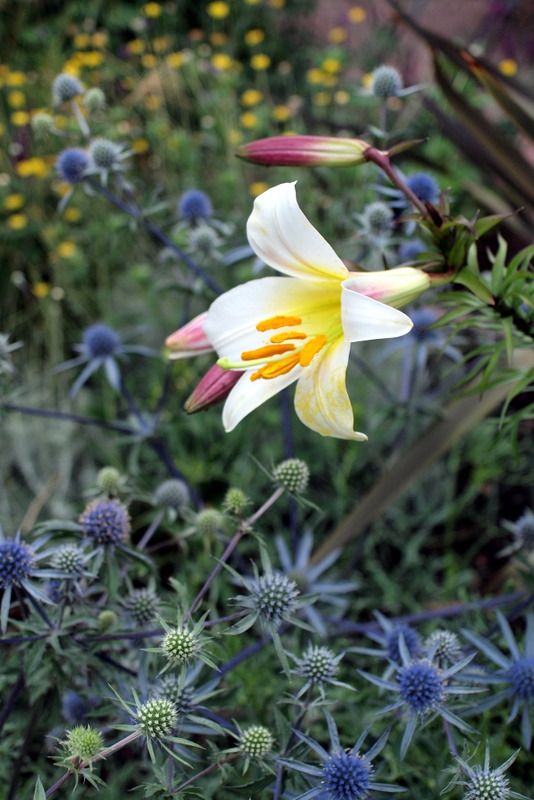
But then this regal lily surprised me by surviving in dryish conditions in the garden near the base of a phormium.
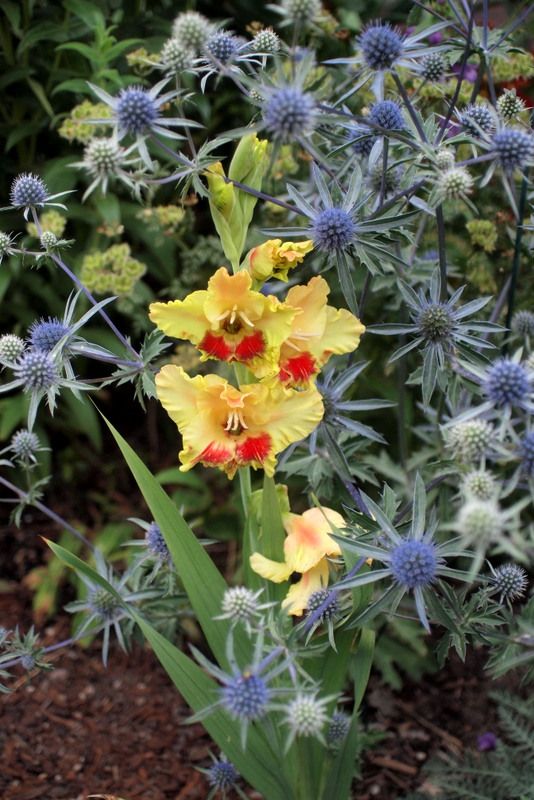
Another surprise bulb, from a bunch of miniature gladiolus I ordered a few years ago. It somehow became churned up when the eryngium planum were planted.
Small but flashy.

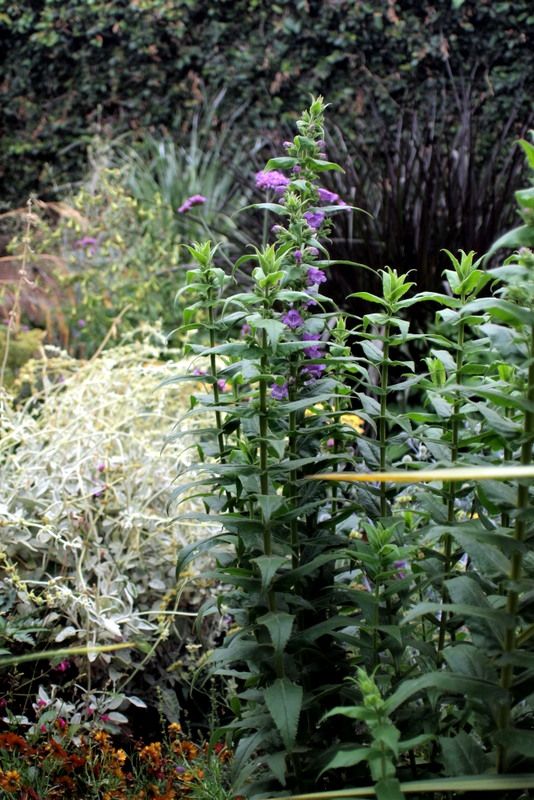
Penstemon ‘Hidalgo’ a shrubby 4-footer just beginnning to bloom
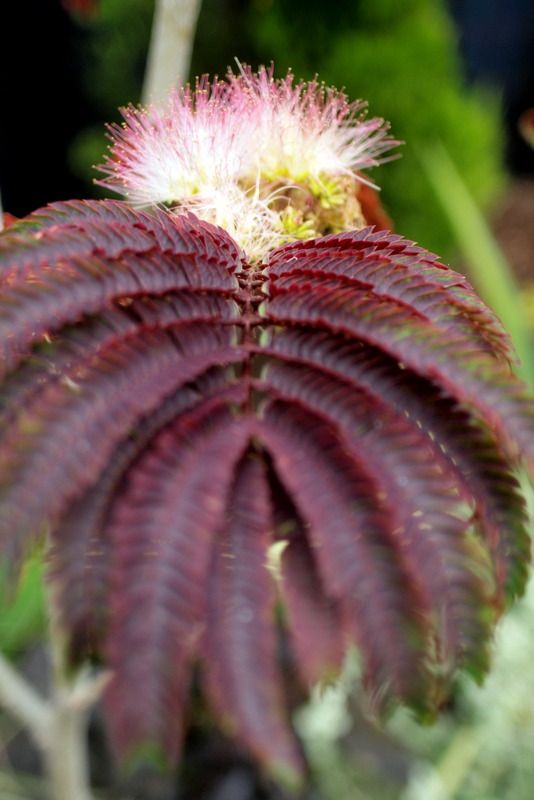
Bloom puff on Albizia ‘Summer Chocolate.’ This tree, currently in a large glazed pot, is a possible candidate to replace the fallen Copper Tree. We desperately need shade on the office, so replacement discussions are ongoing. I’m leaning toward keeping it full sun and planting some Euphorbia ammak and Yucca rostrata.
We’ll see how much appeal that idea still has in August.
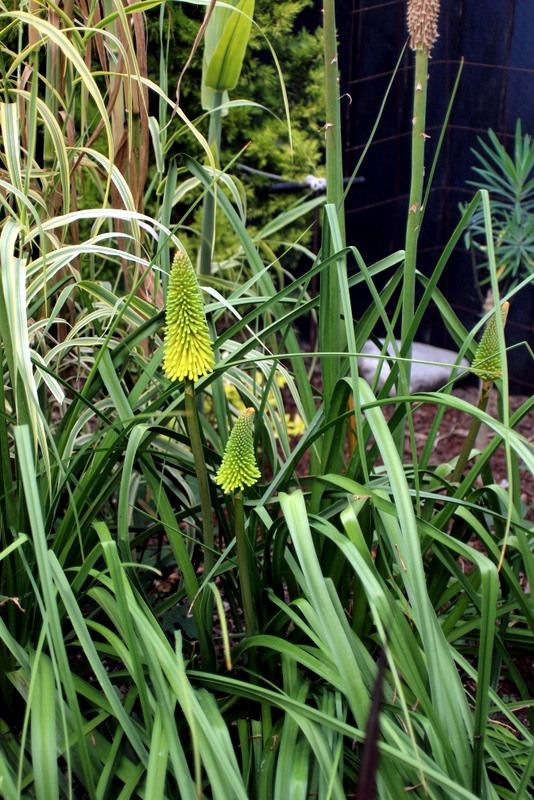
This kniphofia is loving its new home near the compost pile and is continually throwing new spikes. It might be another case of giving a plant lots of sun and circulation at its base. Another thousand square feet of space and I bet I could get this garden stuff worked out.
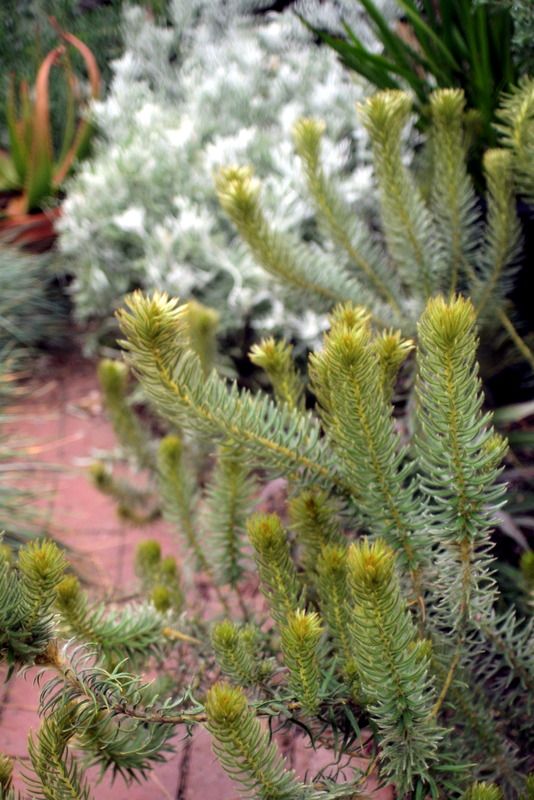
Phylica pubescens, just because this late Bloom Day post has spilled over into Pam’s Foliage Followup at her blog Digging.
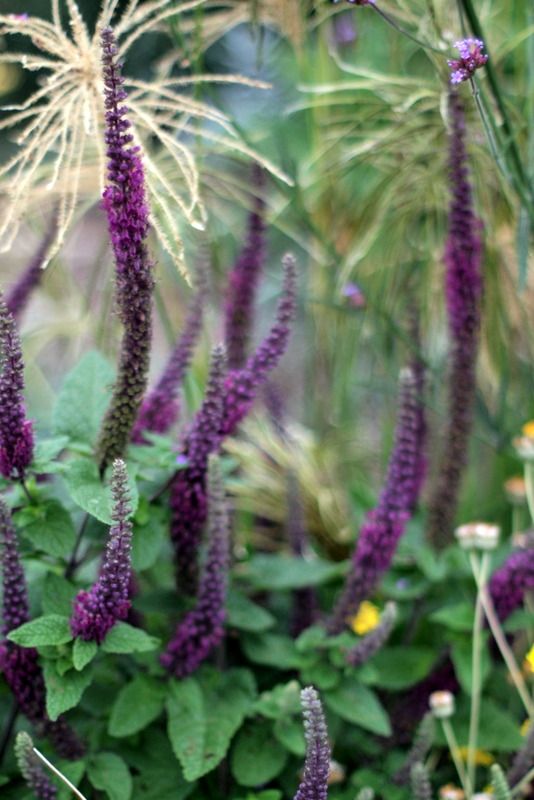
Wonderful Teucrium hircanicum. Blooms from seed its first summer. These plants were all pried up as seedlings from the brick paths in spring.
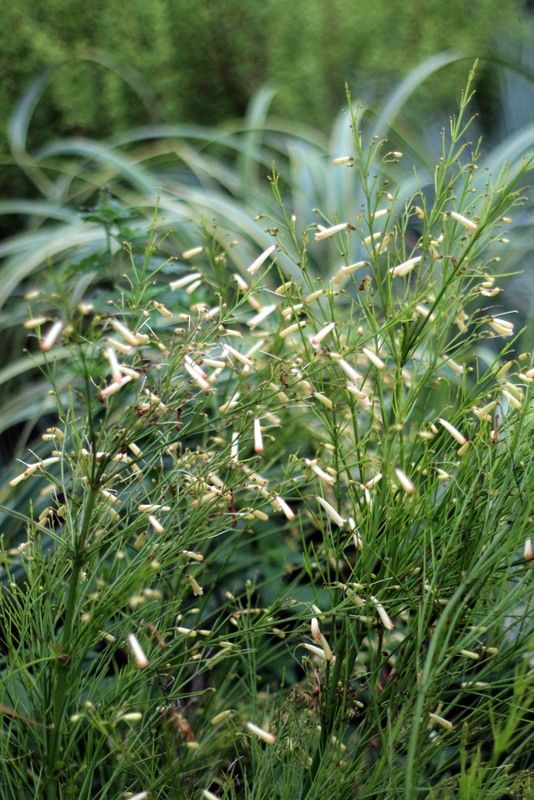
The yellow form of Russelia equisetiformis robs it of its common name, the Firecracker Plant, but it’s a good plant in all its colors.

Ethereal view of the Dittany of Crete, Origanum dictamnus
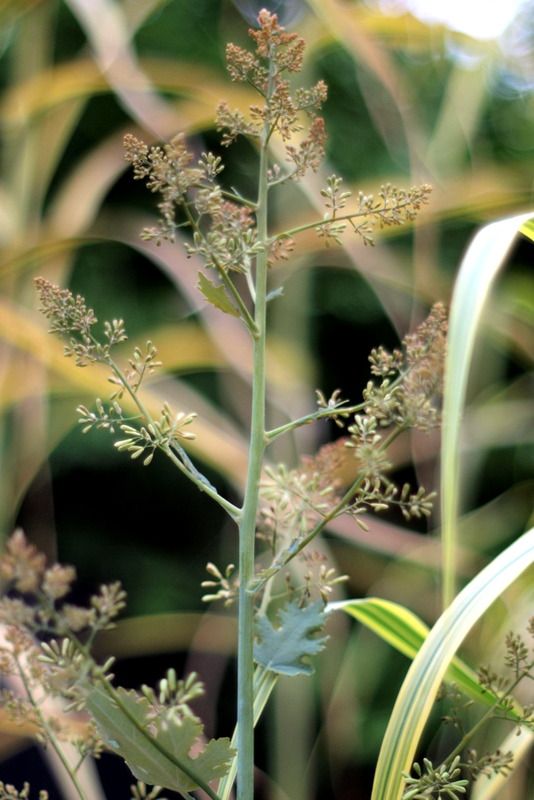
Macleaya in bloom. This one’s wandering roots make it more trouble than tetrapanax.

The last of the annual Coreopsis ‘Mahogany.’ I’ve replaced it elsewhere with gaillardia.

The Garlic Passion Flower vine, Passiflora loefgrenii, is spilling over the fence into the neighbor’s yard, but then their apricot tree has spilled over into my garden.
I wonder who has the better deal.

Garlic passionflower jelly anyone?

I’m trialing three different peachy yarrows this summer. This one ‘Terracotta,’ as well as ‘Marmalade’ and ‘Sawa Sawa’

At least the Monterey cypresses look stable enough and are making good size at the east fence. I’ve already been checking out lots of Bloom Day reports via our host Carol’s site May Dreams Gardens. There’s lots of excitement, and of a less calamitous kind, in the blogs this June.






























































































































